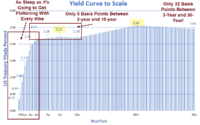Gold weakens as robust US Retail Sales data diminishes Fed rate cut bets
- Gold price falls sharply as Fed Waller maintains a higher for longer interest-rates narrative.
- The last leg of high US inflation has turned out to be significantly stubborn.
- Guidance from three Fed policymakers and US Industrial Production data are due on Wednesday.
Gold price (XAU/USD) is expected to face more pressure as the United States Census Bureau has reported a strong Retail Sales data for December. Sales ticket at retail stores were significantly higher by 0.6% against expectations of 0.4% and the former reading of 0.3%. Retail Sales excluding automobiles rose by 0.4% against expectations and the prior reading of 0.2%. This has eased the chances of interest rate cut by the Fed in March significantly.
The precious metal extended its correction as a hawkish commentary from Federal Reserve (Fed) Governor Christopher Waller has casted doubts about a rate cut by the central bank in the March meeting. Fed policymakers have been favouring interest rates to remain higher for longer, defying market expectations, amid a lack of confidence in inflation returning towards the 2% target in a timely and sustainable manner.
The Consumer Price Index (CPI) data for December indicated that the last leg of high price pressures is quite challenging for Fed policymakers, likely due to steady labor market conditions and decent consumer spending momentum. A quick rate cut decision by the Fed can lead to persistence in inflationary pressures and dampen the work done to achieve price stability.
Going forward, the performance of the US Dollar, Treasury yields and bullions will be guided by the Industrial Production data for December and the interest rate outlook from Fed speakers.
Daily digest market movers: Gold price falls further on robust US consuemr spending momentum
- Gold price has extended its losses to near $2,017 and is expected to decline further towards the psychological support of $2,000.
- The downside bias to the Gold price has strengthened as investors are uncertain about when the Federal Reserve could start discussing the timeframe for interest rate cuts.
- A hawkish commentary from Fed Governor Christopher Waller has raised doubts about whether the central bank will cut interest rates in March.
- Christopher Waller commented that the Fed should not rush to take interest rates down until it is ensured that inflation will return to the 2% target in a sustainable manner.
- Waller added that the Fed should proceed with rate cuts “methodically and carefully” to bail out the economy from an expected slowdown. He further added that resilience in the US economy could delay potential reductions in borrowing costs.
- Fed policymakers have become more determined to maintain a restrictive interest rate stance as the December inflation data turned out surprisingly stubborn.
- After Waller’s commentary, Investment banking firm Goldman Sachs said the Fed could cut rates somewhat later or might announce one cut each quarter from April.
- Meanwhile, bets supporting a rate cut by the Fed in March have dropped further. As per the CME Fedwatch tool, trades see a 58% chance for a 25-basis points (bps) interest rate cut in March, down from 70% at the start of the week.
- The increase in the US Dollar Index (DXY) also weighed on Gold price. The USD Index has slightly corrected after posting a fresh monthly high above 103.50.
- Further action in the US Dollar will be guided by the Industrial Production data for December.
- Investors have projected that the Industrial Production remained stagnant after rising 0.2% in November.
- Apart from the US economic data, Fed’s Beige Book and fresh outlook on interest rates from Fed speakers will be keenly watched. On Wednesday, Fed’s Michael Barr, Michelle Bowman, and John Williams are due to speak.
- Fed policymakers are expected to endorse a restrictive monetary policy stance for a longer period than what is anticipated by market participants.
Technical Analysis: Gold price struggles to sustain above 50-day EMA
Gold price continues its downside below $2,020 after Fed Waller’s hawkish remarks about interest rates. The near-term demand for Gold is not bullish anymore as price has dropped below the 20-day Exponential Moving Average (EMA), which trades around $2,036. The yellow metal has found interim support after sliding to near the 50-day EMA, which oscillates near $2,017. The 14-period Relative Strength Index (RSI) is declining towards 40.00, which could offer some cushion. However, a breakdown below the same will lead to the activation of bearish momentum.
Gold FAQs
Gold has played a key role in human’s history as it has been widely used as a store of value and medium of exchange. Currently, apart from its shine and usage for jewelry, the precious metal is widely seen as a safe-haven asset, meaning that it is considered a good investment during turbulent times. Gold is also widely seen as a hedge against inflation and against depreciating currencies as it doesn’t rely on any specific issuer or government.
Central banks are the biggest Gold holders. In their aim to support their currencies in turbulent times, central banks tend to diversify their reserves and buy Gold to improve the perceived strength of the economy and the currency. High Gold reserves can be a source of trust for a country’s solvency. Central banks added 1,136 tonnes of Gold worth around $70 billion to their reserves in 2022, according to data from the World Gold Council. This is the highest yearly purchase since records began. Central banks from emerging economies such as China, India and Turkey are quickly increasing their Gold reserves.
Gold has an inverse correlation with the US Dollar and US Treasuries, which are both major reserve and safe-haven assets. When the Dollar depreciates, Gold tends to rise, enabling investors and central banks to diversify their assets in turbulent times. Gold is also inversely correlated with risk assets. A rally in the stock market tends to weaken Gold price, while sell-offs in riskier markets tend to favor the precious metal.
The price can move due to a wide range of factors. Geopolitical instability or fears of a deep recession can quickly make Gold price escalate due to its safe-haven status. As a yield-less asset, Gold tends to rise with lower interest rates, while higher cost of money usually weighs down on the yellow metal. Still, most moves depend on how the US Dollar (USD) behaves as the asset is priced in dollars (XAU/USD). A strong Dollar tends to keep the price of Gold controlled, whereas a weaker Dollar is likely to push Gold prices up.
[ad_2]
Source link


